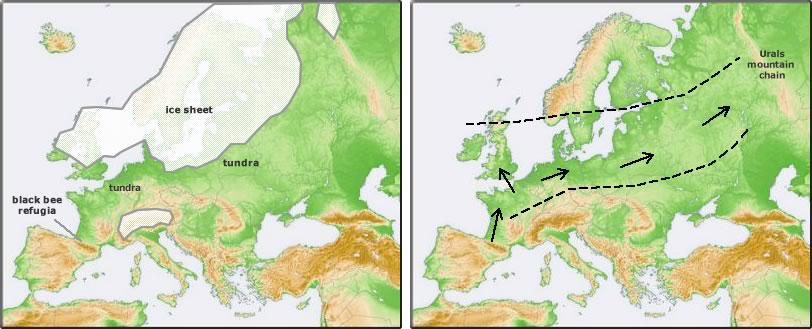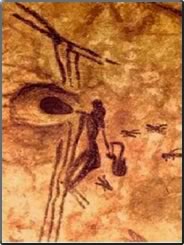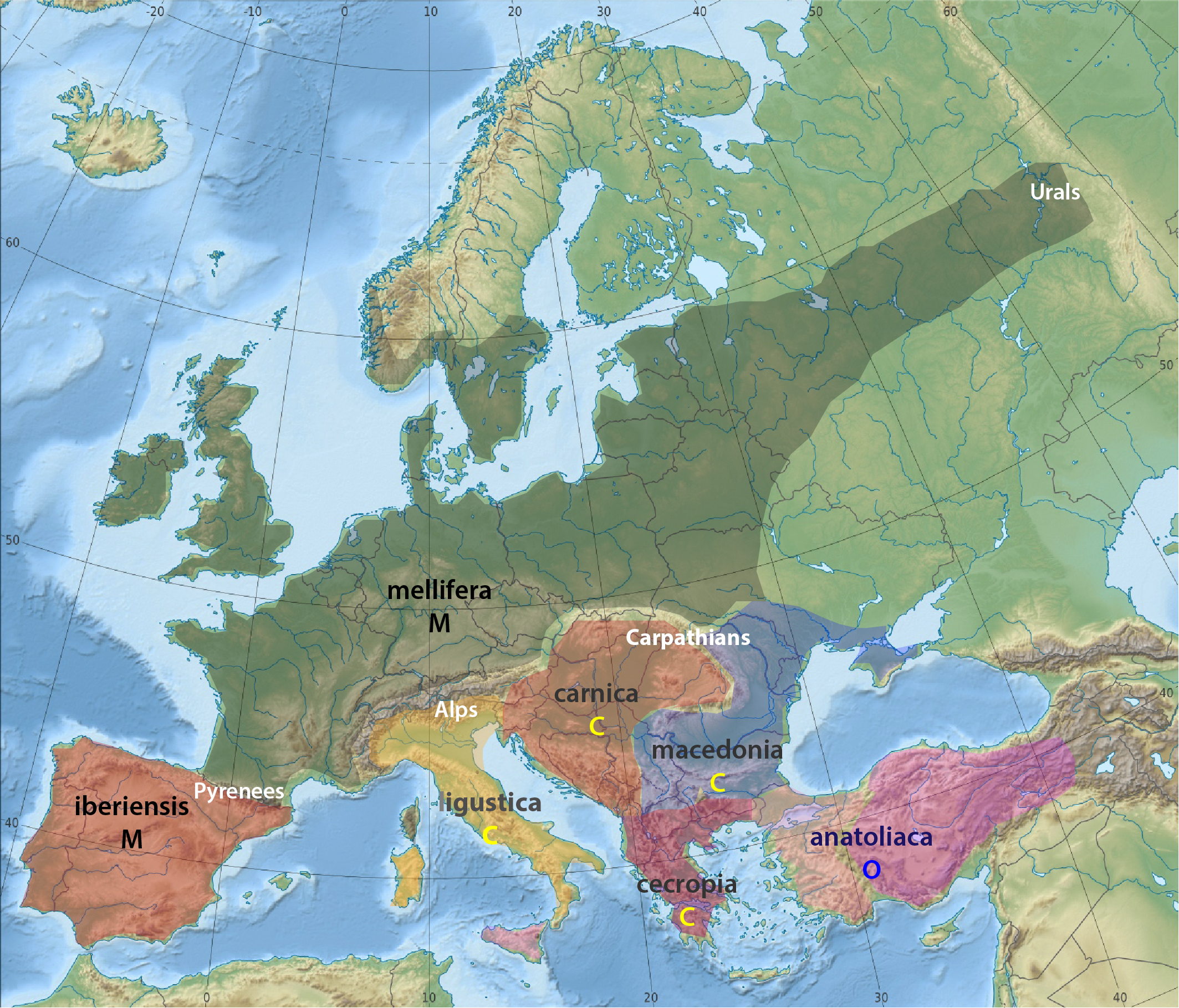Genetics 3G
Origins of the black bee - Apis. m. mellifera - some conclusions

After the Ice Age
The last interglacial period reached its peak about 23 000 years ago. The area covered by ice is shown on the map. South of the ice sheet was tundra. At this time A. m. mellifera would have found refuge in southern France or along the coastal edge of northern Spain.
About 8000 years ago as the ice retreated pollen analysis has shown that the tundra turned to grassland and then to woodland of birch, willow and pine, followed later by hazel, oak, and elm. The bees followed breaking out from their refugia and moving north over the land bridge into England, and eastward along a northern Europe boundary as far east as the Urals.
During the Middle Ages honey from bees in the Russian forests was a major export showing how the black bee could survive Russian winters. The ability of the black bee to colonize this huge area and adapt to the various climates say much for its adaptability.
How did the black bee get to Ireland? Clearly not over a land bridge; the Irish Sea had already separated Ireland from Great Britain by the time bees had arrived in England. The bee could only have been introduced by those early Bronze Age settlers.
During the Middle Ages honey from bees in the Russian forests was a major export showing how the black bee could survive Russian winters. The ability of the black bee to colonize this huge area and adapt to the various climates say much for its adaptability.
How did the black bee get to Ireland? Clearly not over a land bridge; the Irish Sea had already separated Ireland from Great Britain by the time bees had arrived in England. The bee could only have been introduced by those early Bronze Age settlers.

This rock painting of a honey gatherer from the Spider Cave at Bicorp in Valencia is dated about 8000 years old. And proves that bees were present in Spain at this time.
But what were the bees?
A. m. mellifera or
A. m. iberiensis
But what were the bees?
A. m. mellifera or
A. m. iberiensis
The Distribution of Apis mellifera in Europe
The original areas occupied by the main sub-species of Apis mellifera is shown below on a relief map of Europe. It should be noted that many of the areas occupied by the bee groups are bordered by geographical features such as mountain ranges; the Pyrenees, the Alps, the Carpathians and the Urals. Latitude 60° seems to be the northern boundary for the bees which correspond to the northern limit for deciduous trees such as the oak, elm, and lime.
The M, C, and O grouping are shown colour coded.
The original areas occupied by the main sub-species of Apis mellifera is shown below on a relief map of Europe. It should be noted that many of the areas occupied by the bee groups are bordered by geographical features such as mountain ranges; the Pyrenees, the Alps, the Carpathians and the Urals. Latitude 60° seems to be the northern boundary for the bees which correspond to the northern limit for deciduous trees such as the oak, elm, and lime.
The M, C, and O grouping are shown colour coded.

For the beekeeper in Western Europe there are three sub species of Apis. mellifera of huge economic importance.
A.mellifera mellifera commonly know as the black of brown bee was found throughout western and northern Europe. During the last ice age it found a refuge in southern France from which it moved northwards after the ice retreated about
8 000 years ago and was found as far north as Norway and as far east as the Ural mountains in Russia; it was the indigenous bee of the British Isles. Not only was it able to survive on the wet Atlantic coast but also to survive Russian winters.
The black bee was the bee that European settlers first took to North America and Australasia.
At the present time only pockets of the black bee are to be found in the huge area which it formerly occupied. Each pocket represents an eco-type.
A.millifera ligustica or the Italian bee (yellow in colour) has been exported world wide and now forms the basis of many breeding stocks.
A.mellifera carnica originally from Slovenia (grey in colour) is probably the second most popular after the Italian for beekeepers. This sub-species was adopted by German beekeepers in the 1930’s.
A.mellifera mellifera commonly know as the black of brown bee was found throughout western and northern Europe. During the last ice age it found a refuge in southern France from which it moved northwards after the ice retreated about
8 000 years ago and was found as far north as Norway and as far east as the Ural mountains in Russia; it was the indigenous bee of the British Isles. Not only was it able to survive on the wet Atlantic coast but also to survive Russian winters.
The black bee was the bee that European settlers first took to North America and Australasia.
At the present time only pockets of the black bee are to be found in the huge area which it formerly occupied. Each pocket represents an eco-type.
A.millifera ligustica or the Italian bee (yellow in colour) has been exported world wide and now forms the basis of many breeding stocks.
A.mellifera carnica originally from Slovenia (grey in colour) is probably the second most popular after the Italian for beekeepers. This sub-species was adopted by German beekeepers in the 1930’s.